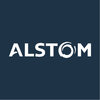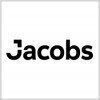Filter interviews by
Maire Tecnimont Process Engineer Interview Questions, Process, and Tips
Maire Tecnimont Process Engineer Interview Experiences
4 interviews found
(5 Questions)
- Q1. What is the criteria for line sizing?
- Ans.
Line sizing criteria is based on factors like flow rate, pressure drop, fluid properties, and velocity.
Consider the maximum flow rate the line needs to handle
Calculate the pressure drop allowed for the system
Take into account the properties of the fluid being transported
Ensure the velocity of the fluid is within acceptable limits
Use industry standards and guidelines for sizing criteria
Example: For a water distribution ...
- Q2. What is NPSH in pump calculations?
- Ans.
NPSH stands for Net Positive Suction Head and is a critical parameter in pump calculations.
NPSH is the measurement of the amount of suction head required by a pump to prevent cavitation.
It is calculated by subtracting the vapor pressure of the liquid from the total suction head of the pump.
NPSH is important to ensure the pump operates efficiently and does not experience cavitation which can damage the pump.
Low NPSH val...
- Q3. How to calculate suction pressure in pump?
- Ans.
Suction pressure in a pump can be calculated by adding the atmospheric pressure to the gauge pressure.
Calculate gauge pressure by subtracting the pressure at the pump outlet from the pressure at the pump inlet.
Add the atmospheric pressure to the gauge pressure to get the suction pressure.
Suction Pressure = Atmospheric Pressure + Gauge Pressure
Example: Atmospheric pressure = 14.7 psi, Gauge pressure = 5 psi, Suction pre
- Q4. What to do if NPSH is negative.
- Ans.
If NPSH is negative, increase the suction pressure or decrease the fluid temperature to prevent cavitation.
Increase the suction pressure by using a booster pump or increasing the tank level
Decrease the fluid temperature to increase the vapor pressure margin
Check for any restrictions or blockages in the suction line
Ensure the pump is properly sized for the application
- Q5. Why line size of pump suction is bigger than pump diacharge?
- Ans.
The line size of pump suction is bigger than pump discharge to reduce friction losses and increase efficiency.
Bigger suction line reduces friction losses and allows for easier flow of fluid into the pump
Smaller discharge line increases pressure and helps in maintaining flow rate
This design helps in optimizing pump performance and efficiency
I applied via Walk-in and was interviewed in Aug 2023. There was 1 interview round.
(1 Question)
- Q1. Process of line sizing, Pump hydraulic calculation
- Ans.
Line sizing involves determining the appropriate diameter of pipes for a given flow rate, while pump hydraulic calculation involves calculating the pump head and power requirements.
Determine the required flow rate for the process
Calculate the pressure drop along the pipeline
Select the appropriate pipe material and schedule based on process conditions
Use hydraulic calculation formulas to determine pump head and power re...
Interview Preparation Tips
I applied via Referral and was interviewed in Sep 2022. There were 2 interview rounds.

(6 Questions)
- Q1. Overview of past experience
- Q2. Problem on Pump hydraulics
- Q3. Control valve hydraulics
- Q4. Problem on material balance
- Q5. Problem on energy balance
- Q6. Questions on points mentioned in resume
Interview Preparation Tips
- Pumps
- Control Valves
- Material Balance
- Energy balance
Basic questions related to chemical engineering such as what is the formula of range in cooling tower, pump hydraulics, line sizing.
Read the current affairs from news paper even though these part of interview is not that significant.
(1 Question)
- Q1. How to do pump hydraulics
- Ans.
Pump hydraulics involves understanding the flow rate, pressure, and head of the fluid being pumped.
Determine the flow rate of the fluid being pumped
Calculate the pressure required to move the fluid through the system
Determine the head required to overcome any elevation changes in the system
Select a pump that can meet the flow rate, pressure, and head requirements
Ensure the pump is properly sized and installed for optim
Interview Preparation Tips
Maire Tecnimont interview questions for designations
Top trending discussions






Interview questions from similar companies

Process Engineer Interview Questions & Answers
Alstom Transportationposted on 23 Apr 2020
I applied via Naukri.com and was interviewed in Oct 2019. There were 4 interview rounds.
Interview Questionnaire
1 Question
- Q1. Questions related to the traits mentioned on CV.
Interview Preparation Tips

I applied via Job Portal and was interviewed in Oct 2021. There were 2 interview rounds.

(1 Question)
- Q1. Past experience question...
Interview Preparation Tips

Process Engineer Interview Questions & Answers
Larsen & Toubro Limitedposted on 14 Oct 2023
I applied via Walk-in and was interviewed in Sep 2023. There were 2 interview rounds.

(4 Questions)
- Q1. Draw P&ID of Pump System
- Ans.
P&ID of Pump System shows the piping, equipment, instrumentation, and control interlocks of the system.
Include pump symbol with arrows indicating flow direction
Label all equipment such as pumps, valves, tanks, etc.
Show instrumentation like pressure gauges, flow meters, etc.
Indicate control interlocks and safety features
Use standard symbols and colors as per industry guidelines
- Q2. What is npsh available
- Ans.
NPSH available stands for Net Positive Suction Head available, which is a measure of the absolute pressure at the suction port of a pump.
NPSH available is the total suction head in feet absolute at the suction nozzle of the pump.
It is important for ensuring that the pump does not cavitate, which can cause damage to the pump and decrease efficiency.
NPSH available is calculated by subtracting the vapor pressure of the li...
- Q3. How to calculate NPSH
- Ans.
NPSH is calculated by subtracting the vapor pressure of the liquid from the total head of the pump.
NPSH = H - (Pv / rho * g)
H is the total head of the pump
Pv is the vapor pressure of the liquid
rho is the density of the liquid
g is the acceleration due to gravity
Ensure all units are consistent (e.g. meters, Pascal, kg/m^3, m/s^2)
- Q4. Draw two phase system p&ID
- Ans.
A two-phase system P&ID shows the process flow of a system with two distinct phases.
Identify the two phases involved in the system (e.g. liquid-gas, solid-liquid).
Use different symbols to represent each phase on the P&ID.
Show the flow direction and connections between components in the system.
Include labels and legends to explain the components and their functions.
Ensure clarity and consistency in the representation of
Interview Preparation Tips

I applied via Walk-in and was interviewed in Feb 2023. There were 3 interview rounds.

Simple aptitude question s related to general maths identity and local technical questions
(1 Question)
- Q1. Hr will ask about previous experience. What will improve in this company
Interview Preparation Tips

Process Engineer Interview Questions & Answers
Larsen & Toubro Limitedposted on 25 Sep 2024
(1 Question)
- Q1. Pumps, line and hydrualics

Process Engineer Interview Questions & Answers
Larsen & Toubro Limitedposted on 27 Feb 2024
I appeared for an interview in Jan 2024.
(2 Questions)
- Q1. What are types of psv
- Ans.
Types of PSV include conventional spring-loaded PSV, pilot-operated PSV, balanced bellows PSV, and rupture disc PSV.
Conventional spring-loaded PSV
Pilot-operated PSV
Balanced bellows PSV
Rupture disc PSV
- Q2. What are heat exchanger types
- Ans.
Heat exchanger types include shell and tube, plate, finned tube, and double pipe.
Shell and tube heat exchanger
Plate heat exchanger
Finned tube heat exchanger
Double pipe heat exchanger
Skills evaluated in this interview
Maire Tecnimont Interview FAQs
Tell us how to improve this page.
Maire Tecnimont Interviews By Designations
- Maire Tecnimont Process Engineer Interview Questions
- Maire Tecnimont Assistant Manager Interview Questions
- Maire Tecnimont Graduate Engineer Trainee (Get) Interview Questions
- Maire Tecnimont Design Engineer Interview Questions
- Maire Tecnimont Site Engineer Interview Questions
- Maire Tecnimont Deputy Chief Instrumentation Engineer Interview Questions
- Maire Tecnimont Senior Systems Engineer Interview Questions
Interview Questions for Popular Designations
- Process Engineer Trainee Interview Questions
- Process Associate Interview Questions
- Chemical Process Engineer Interview Questions
- Junior Process Engineer Interview Questions
- Processing Executive Interview Questions
- Process Developer Interview Questions
- Assistant Manager Process Engineering Interview Questions
- Process Quality Engineer Interview Questions
- Show more
Maire Tecnimont Process Engineer Interview Process
based on 2 interviews
Interview experience
Process Engineer Interview Questions from Similar Companies
|
Principal Engineer
17
salaries
| ₹13 L/yr - ₹25 L/yr |
|
Deputy Chief Engineer
14
salaries
| ₹21 L/yr - ₹30 L/yr |
|
Senior Engineer
8
salaries
| ₹6 L/yr - ₹16 L/yr |
|
Process Engineer
7
salaries
| ₹6 L/yr - ₹12.4 L/yr |
|
QA QC Engineer
6
salaries
| ₹5.2 L/yr - ₹24.6 L/yr |

Larsen & Toubro Limited

L&T Construction

Megha Engineering & Infrastructures

Shapoorji Pallonji Group
- Home >
- Interviews >
- Maire Tecnimont Interview Questions >
- Maire Tecnimont Process Engineer Interview Questions















